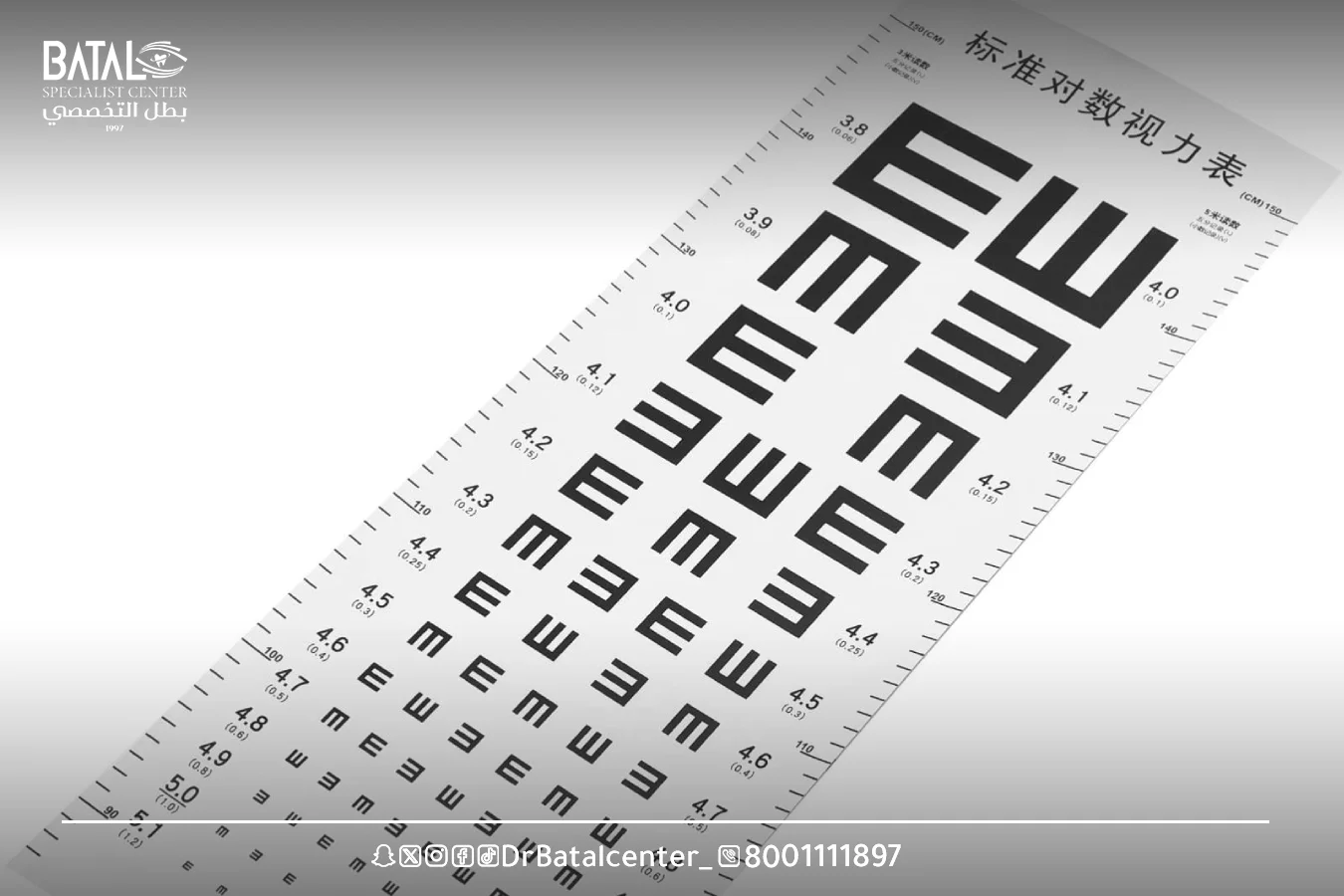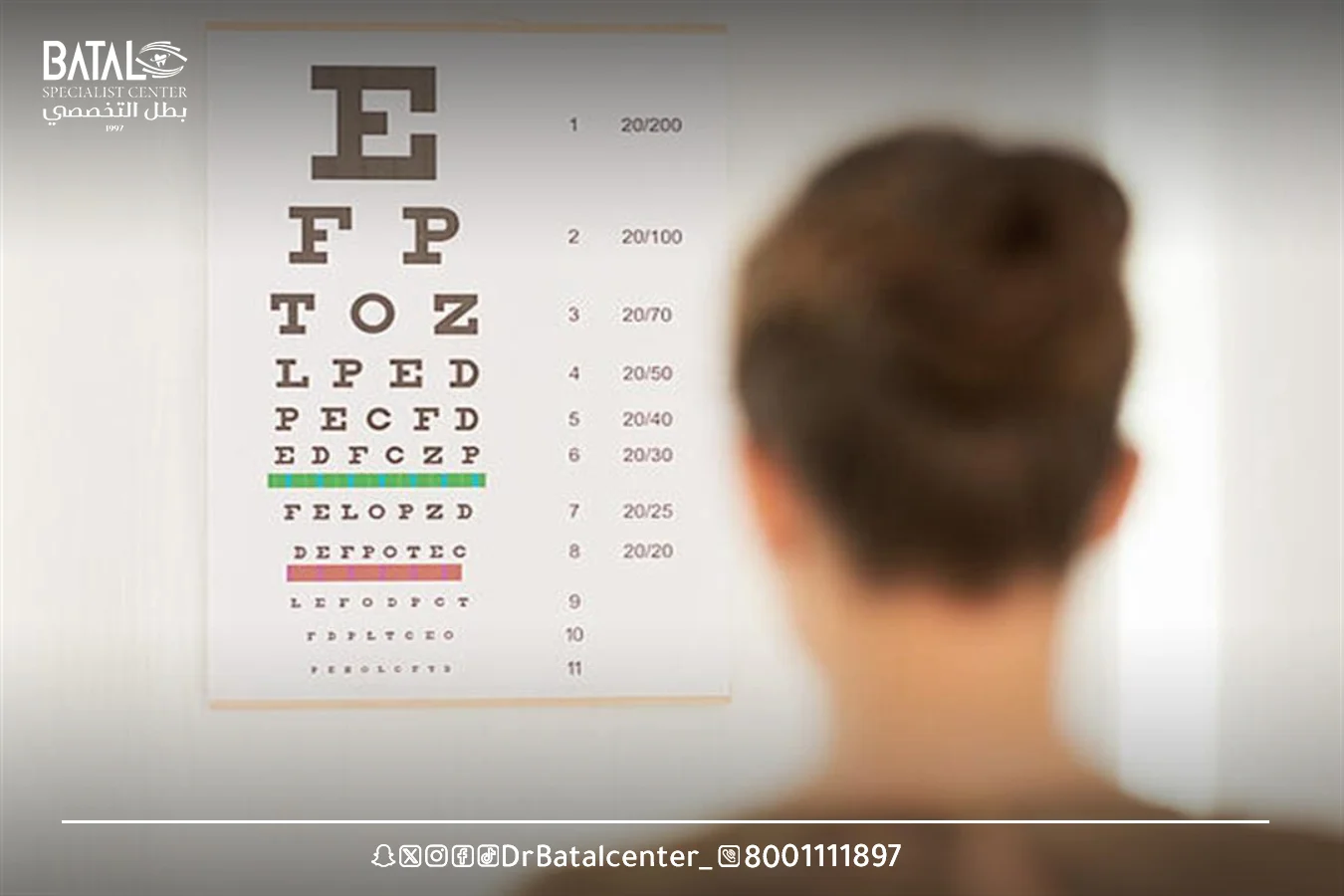Med info
Vision test at home in simple steps | comprehensive guide

Table of content
ToggleWhat is a home vision test?
Although the home vision test is no substitute for visiting an eye doctor, it is an easy and quick way to assess general visual acuity and take a look at the condition of the vision. In this article, we will learn about this test and its importance step by step. We will also discuss the most important types of home vision test, and know when we should visit a doctor if we encounter blurred vision or difficulty reading.
The importance of home vision testing for your eye health
Although the home vision test is a simple and easy test that does not replace a visit to the doctor, it has many benefits for eye health, and below we review the most important of them:
- Early detection of vision problems: Home vision tests can detect early signs of vision problems, such as farsightedness, nearsightedness, and non-dimensionality – while early detection of these problems contributes to increasing the chances and effectiveness of treatment and preventing exacerbations.
- Maintaining eye health: These tests play a role in monitoring eye health over time. By performing regular tests, people can notice any change in their vision and thus start resorting to a specialized ophthalmologist.
- Save time and money: An eye test at home can save time and money by reducing the need for frequent eye doctor visits, especially if the person does not have noticeable visual problems.
- Peace of mind: Home vision tests can help with peace of mind by ensuring safe vision, thus reducing stress and anxiety associated with potential vision problems.
Types of home vision tests
There are many types of home vision tests that can be relied upon to identify visual acuity and ensure that there are no eye health problems. The most important of these types are as follows:

Letter Chart Test (Snellen Chart)
The letter chart test is known as one of the most common tests for measuring visual acuity at home. It is also an easy test and does not require special equipment, and it also provides accurate measurement over long distances, but its disadvantages lie in its failure to test near or non-distant vision, and its failure to detect other eye diseases.

- Pinhole Lens Tests
Pinhole lens tests are used to evaluate the presence of myopia, and they also involve covering one eye with a lens with a small hole, and then reading the letter diagram from a close distance, and if vision improves significantly when using the lens, there may be myopia.
- Interactive vision tests on our website
These are interactive vision tests that can be done via a smartphone or computer, and include a variety of tasks such as identifying patterns or tracking moving objects. These tests help provide a quick overview of vision health, but they do not replace a comprehensive examination by an ophthalmologist.
How to take a vision test at home step by step
There are a set of steps that must be followed in order to conduct a vision test for children at home or examine the vision for different age groups, and below we learn about these steps according to the type of test:
Letter chart tests
- Materials needed: A4 sheet of paper printed with a Snellen chart, pen, wall or flat panel.
- Steps:
- Prepare the chart by applying it and ensuring the clarity of the print, then fix it on the wall or flat panel at eye level, making sure the chart is well lit.
- Prepare for the test: by wearing regular glasses or contact lenses, covering one eye with a cloth or palm, and then standing or sitting 6 meters away from the chart.
- Test procedure: Focus on the capital E at the top of the chart, identify the smallest visible letter on each line, and record the smallest visible letter on each line for each eye on a separate sheet of paper.
- Evaluation of results: By comparing the results with the attached normal visual acuity chart, if the smallest letter in each line can be read with both eyes, there is normal visual acuity, but if you face difficulty reading some letters, there may be myopia or farsightedness.
Pinhole Lens Tests
- Materials needed: A4 sheet of paper, pin, light source.
- Steps:
- Print the Pinhole lens model on paper.
- Use the pin to make a small hole in the center of the lens model.
- Cover one eye with the hand.
- Hold the Pinhole lens in front of the uncovered eye so that the small hole is opposite the focus of the eye.
- Looking through the small hole of the light source.
- Note whether the visibility of the light source has improved or not.
- Evaluation of results: If vision of the light source improves significantly, it is possible that the person suffers from poor vision (myopia), and here you must consult a specialized ophthalmologist to conduct a comprehensive eye examination, and obtain a suitable prescription for contact lenses or glasses.
Application and website testing
- Materials needed: smartphone or computer, internet connection.
- Steps:
- Choose a reliable website or application to test for poor vision at home, and this can be confirmed by reading reviews.
- Follow the instructions on the website or app carefully.
- Ensure the test is conducted in a well-lit environment, sitting at an appropriate distance from the screen.
- Complete all vision test tasks, which may include different tasks, so you must ensure that they are all completed.
- Review results, as most websites and apps show visibility and information about what the results mean.
When should you visit an ophthalmologist for a vision test at the Eye Center of the Batal Complex?
It is recommended to visit the Eye Center at Batal Specialized Complex at least once every two years, or based on the doctor’s recommendations. However, there are cases in which visiting us becomes necessary to ensure the health of the eyes, such as:
- Notice a change in vision, such as blurred vision or difficulty seeing at night.
- Suffering from redness, pain, or itching of the eye.
- Headache or dizziness.
- Family history of eye diseases, such as cataracts and glaucoma.
- Having a chronic disease, such as diabetes.
- Taking medications that may negatively affect vision.
- Suffering from an eye injury.
At the end of our article, we have learned about the vision test at home, and we have reviewed important information about the steps of the most important of these tests, which is the beginning of vision correction, while you can visit us at the Eye Center at Batal Specialized Complex, to conduct a comprehensive examination of your eyes and check on your vision.
Test your eyesight today, and follow up on the diagnosis with the experts of Batal Specialized Complex in Jeddah
At Batal Specialized Eye Complex in Jeddah, we provide the latest technologies for examining and diagnosing vision problems with high accuracy, whether you suffer from blurred vision or weak vision, or just want to check on your vision.
Our consultants use digital vision measuring devices and advanced refraction tests to accurately determine vision strength and provide appropriate solutions such as glasses, contact lenses, or laser vision correction.
Don’t just do the home test — book your appointment at Batal Specialized Complex in Jeddah for a professional examination that guarantees the safety of your vision in the long term




